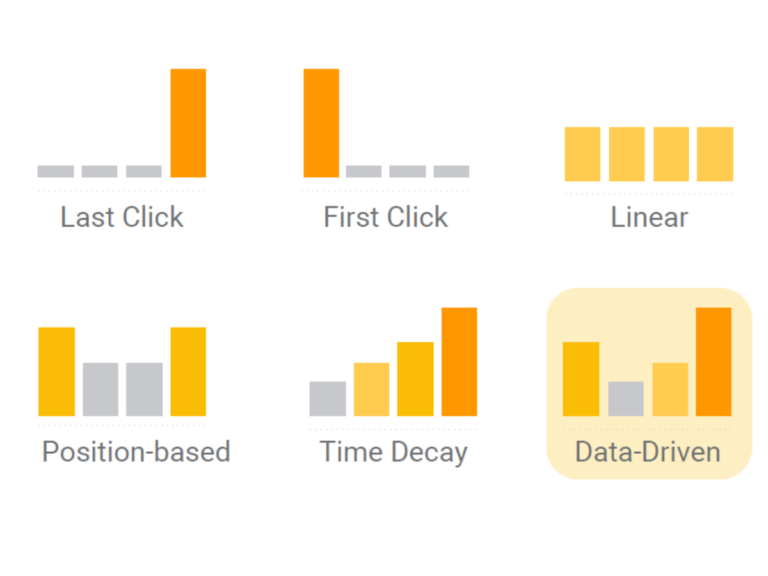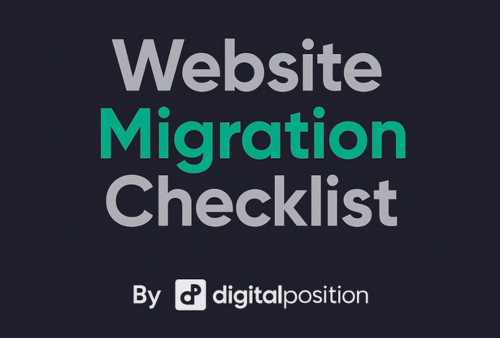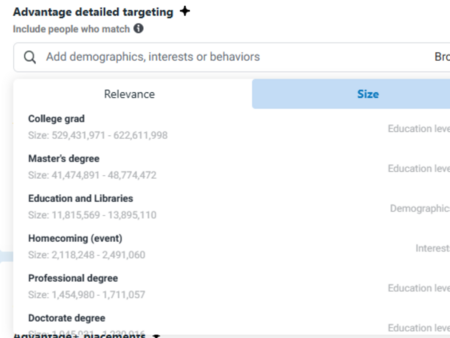TLDR:
- Feed Optimization Will Be a Must For Google Shopping
- Bing Is Making a Comeback
- AppLovin Will Be The Breakout Advertsing Platform in 2025
- AI Overviews and Enhanced Organic Shopping Features Will Complicate Keyword Tracking
- Visibility in Bing Will Be More Important Than Ever
- A Strong Affiliate Strategy Will Be Critical for Visibility in AI Platforms
- Advantage+ Shopping Campaigns taking over (and they’re really working)
Big changes are coming to digital marketing in 2025, and if you want to stay competitive, you’ll need to keep up. From Google’s rising ad costs to new players like AppLovin making waves, the game is evolving fast. 2024 set the stage with some major trends, but 2025 is where things are really going to take off.
Here’s what you need to know!
PPC Advertising
Feed Optimization for E-Commerce Will Be Non-Negotiable
Why This Is Happening
Poorly optimized product feeds are a silent killer for e-commerce businesses, and in 2025, you can’t afford to let this slide. With Google expanding its shopping inventory, their algorithm needs detailed product data to place your ads effectively. Incomplete feeds mean wasted budget and missed opportunities.
Your priority should be ensuring your feed is as complete and detailed as possible. Use accurate descriptions, quality images, and competitive pricing. A complete feed helps Google’s automation connect your products with the right audience, boosting visibility and sales. Don’t leave this to chance—your product feed is your lifeline in 2025.
What You Should Do
If you’re running Google Shopping campaigns, a well-optimized product feed is critical for success. Here’s how to ensure your feed is working as hard as it can:
- Fill Out Every Field Possible
- Use Google’s documentation to identify all available fields for your product feed.
- Include detailed product descriptions, accurate pricing, and relevant categories.
- Add attributes like sizes, colors, materials, and any unique identifiers.
- Use High-Quality Data
- Ensure all product information is accurate and up-to-date.
- Include clear, professional product images that meet Google’s specifications.
- Leverage Third-Party Tools
- Avoid manual feed updates, which can be time-consuming and error-prone.
- Use platforms like Datafeedwatch or Feedonomics to automate feed management.
- These tools ensure your feed stays optimized, updated, and compliant with Google’s requirements.
- Test and Refine Regularly
- Monitor your feed’s performance and adjust fields based on what’s driving the most clicks and sales.
- Stay on top of updates in Google’s shopping inventory to ensure your feed remains competitive.
By putting these practices in place, you’ll give Google everything it needs to showcase your products to the right audience at the right time.
Google’s Getting More Expensive, and Bing Is Back in the Game
Why This Is Happening
Google Ads are already pricey, but with competition rising, expect CPCs to climb even higher. In Digital Position’s portfolio alone, we saw advertsing costs increase by 33% during Black Friday weekend, but clicks we’re nearly identical to 2023. There is not doubt that this trend will continue in 2025, making it that much harder to squeeze out your advertising goals in the new year.
On the flip side, Bing is making a quiet but meaningful comeback, largely due to its integration with ChatGPT/SearchGPT technology. Bing is evolving from Google’s lesser-known cousin into a legitimate contender, steadily gaining relevance with its unique features, even if it won’t take a massive share of the market overnight.
For advertisers, Bing is becoming an increasingly attractive platform because of its cost efficiency. With CPCs on Google steadily climbing, many should turn to Bing to stretch their budgets further. Bing ads often have lower competition, which translates into cheaper clicks and higher profitability. While Google Ads CPCs rose across our portfolio by 25%, Microsoft Ads only rise by an average of 7%, or $.08 across every account we manage.
What You Should Do
If you’ve been overlooking Bing in your advertising strategy, now’s the time to make a change. Bing’s growing innovation and solid performance are making it a must-have platform for businesses that want to stretch their ad dollars while maintaining quality results.
- Test Your Google Ads Strategies on Bing
- Replicate your top-performing Google campaigns on Bing to see how they perform.
- Monitor key metrics like CPC and conversion rates to evaluate potential profitability.
- Reallocate Budget for Better Results
- If Bing delivers strong performance, consider shifting more of your budget there to increase ROI.
- Bing’s lower competition often means cheaper clicks, making it a cost-effective way to grow.
- Optimize Bing as a Dedicated Channel
- Treat Bing as more than an afterthought—optimize and test new campaigns, keywords, and targeting specifically for its audience.
- Regularly refine and adjust your Bing strategy to ensure it’s driving maximum value.
With the right attention and effort, Bing can become a powerful addition to your advertising mix in 2025.
AppLovin Will Be The Breakout Advertsing Platform in 2025
Why This Is Happening
It’s been a while since a new advertising platform made waves, but AppLovin is stepping up. With rising costs and uncertainty on traditional platforms, apps are emerging as the next big opportunity—and AppLovin is leading the way.
Our early tests show AppLovin delivers impressive results, with strong metrics in Shopify Analytics and post-purchase surveys showing an incremental impact on your business. By offering access to unique app inventory, it’s proving to be a game-changer for businesses ready to explore new opportunities.
What You Should Do
AppLovin is super easy to test, especially if you’re already running Facebook ads. Use the same creatives and see how they perform—it’s that simple. Not sure how to get started? We can help you get set up and rolling in no time.
Paid Social Advertising
Advantage+ Shopping Campaigns Will Keep Crushing It
Why This Is Happening
We’ve watched ASC evolve from a basic automation tool into something pretty incredible. The biggest game-changer? Meta finally fixed their customer segmentation. When ASC first launched, you were stuck with just one existing customer bucket – which meant your retargeting audiences got mixed up with either new customers or retention campaigns. It was kind of a mess.
But then Meta dropped the Engaged Customers bucket, and everything changed. Looking at our portfolio data, the numbers don’t lie – accounts using ASC properly are seeing conversion rates jump by 25-30% compared to traditional campaigns. Actually, every single account we manage is running at least one ASC campaign now, and many have switched over completely.
What You Should Do
You’re leaving money on the table if you’re not using Meta’s enhanced segmentation. Here’s what we’re telling our clients:
Check Your Setup
- Look at both your Engaged and Existing Customer buckets
- Make sure your tracking is actually working (we see this mess up all the time)
- Get your audience definitions right – this matters more than you think
Watch Your Numbers
- Work with your account team to review budget allocation
- Track performance between different segments
- Build out a scaling plan based on what’s actually working
Cost Caps Becoming The Go-To Bidding Strategy
Why This Is Happening
Look, we’ve seen Meta’s algorithm get better every year, but this latest update to cost per result bidding is different. Our teams see campaigns that can actually scale spend while keeping CPAs stable – something that used to be nearly impossible. We’re auditing accounts across different industries, and the pattern is clear: cost caps are working better than ever.
The really exciting part? The algorithm finally figured out how to maintain efficiency during growth. Remember when scaling meant watching your CPAs spiral out of control? Those days might be behind us. We’re seeing this work across accounts of all sizes, from small businesses to enterprise clients spending millions.
What You Should Do
Cost caps are powerful, but there’s definitely a right and wrong way to use them. You have to get the foundation right:
- First up, check your conversion volume – if it’s too low, cost caps won’t work
- Check out your historical performance before setting targets
- Don’t forget there’s a learning phase (seriously, this is important!)
- Double check your tracking setup
- Make sure your pixel is firing correctly
And do yourself a favor and make sure you TEST before going all in on anything.
Also, focus on the complete picture. Watch your overall ROAS, not just CPA. Keep an eye on total conversion volume.
Bigger Advertisers Will Struggle With Incremental Growth Due To Frequency Issues
Why This Is Happening
While Advantage+ Shopping Campaigns have been a game-changer for many brands, they’ve introduced a new challenge: higher customer frequency rates compared to traditional campaign types.
ASC campaigns are amazing for performance, but there’s a catch – they hit the same users more often than traditional campaigns do. If you’re spending under 10k a day, you might not notice.
But for bigger brands? It’s becoming a real headache. We’re seeing some accounts hit frequency walls that limit growth, even when the performance metrics look good.
The problem gets worse in mature markets where you’ve already reached most of your audience. When the same people see your ads too often, ad fatigue kicks in fast, and your returns start dropping.
What You Should Do
We’ve found a few ways to handle the frequency challenge.
Smart segmentation:
- Group ASC campaigns by buyer persona
- Create different strategies for different audiences
- Keep track of who’s seeing what
Keep it fresh.
- Change up your creative more often than you think you need to
- Test new themes regularly
- Don’t let ads run too long
Mix things up.
- Try some broader campaigns with higher CPAs
- Test upper-funnel stuff
- Look at new placements
- Maybe expand to new locations
- Consider different ad formats
SEO
AI Overviews and Enhanced Organic Shopping Features Will Complicate Keyword Tracking
Why This Is Happening
AI tools like Google’s AI Overviews are transforming how search engine results pages (SERPs) operate. These features summarize information directly within search results, giving users quick answers without needing to visit a website. Coupled with expanded organic shopping features showcasing product details such as pricing and reviews, these updates reduce traditional organic click-through rates and make keyword tracking more difficult.
- AI summaries reduce the need for users to click on individual websites.
- Enhanced shopping features offer comprehensive product information in SERPs, making it harder for individual sites to stand out.
- Traditional keyword tracking is becoming less reliable as user behavior shifts.
For businesses relying on organic search traffic, adapting to these changes is critical to maintaining visibility and clicks.
What You Should Do
- Implement Comprehensive Structured Data Markup: Use schema markup to provide search engines with clear information about products, such as pricing, availability, and reviews. This structured data helps Google & Bing accurately present product details in search results.
- Build Out a Robust Shopping Feed: Ensure your shopping feed is complete and optimized with accurate product data, including titles, descriptions, pricing, availability, and high-quality images. Regularly update the feed to reflect changes in inventory or promotions, and include category-specific attributes like size charts or specs to enhance visibility. A well-maintained shopping feed increases the chances of your products being featured prominently in organic shopping results and AI-driven summaries.
- Enhance Content Quality: Create unique and comprehensive content that address user intent and common queries, ensuring that AI overviews feature relevant and valuable information.
- Improve User Experience: Optimize page load times, mobile responsiveness, and overall site navigation to meet the expectations of both users and search engine algorithms.
- Leverage User-Generated Content: Encouraging customer reviews and ratings can enhance the credibility and attractiveness of product pages, increasing the likelihood of being featured in AI-driven search results.
- Track Performance: Closely monitor traffic from ChatGPT and Organic Shopping using Google Analytics 4
Visibility in Bing Will Be More Important Than Ever
Why This Is Happening
Bing is becoming a bigger player in search due to AI-driven tools like SearchGPT, which use Bing’s results to create their outputs. These tools are influencing how users find information and make decisions, making it vital for brands to rank well on Bing to maintain visibility in this expanding search ecosystem.
Businesses that prioritize Bing’s ranking factors will be better positioned to stay relevant in AI-enhanced search tools.
What You Should Do
If you haven’t focused on Bing optimization before, now is the time to start. It’s not just an alternative search engine anymore—it’s a key player in AI-driven search results.
- Focus on Bing’s unique algorithms to optimize your content.
- Use Bing Webmaster Tools to identify opportunities for improvement.
- Experiment with Bing-specific features, like structured data tailored to their preferences.
By prioritizing Bing in your SEO strategy, you’ll ensure your brand stays visible in emerging AI search tools and doesn’t miss out on critical traffic.
A Strong Affiliate Strategy Will Be Critical for Visibility in AI Platforms
Why This Is Happening
Affiliate marketing is evolving alongside AI tools. SearchGPT and similar platforms often rely on trusted affiliate content to recommend products, giving well-executed affiliate campaigns a significant edge in reaching users through AI-generated results.
- AI recommendations often pull from authoritative affiliate content.
- Trusted affiliates can directly influence customer purchasing decisions.
- Strong affiliate strategies will help brands stand out in e-commerce searches.
This growing reliance on affiliate-driven recommendations means brands need to strengthen their relationships with affiliates and ensure they have the tools needed to succeed.
What You Should Do
Now is the perfect time to refine your affiliate strategy and work closely with partners who can amplify your brand’s presence in AI-generated results.
- Partner with Reputable Affiliates: Build relationships with affiliates who create high-quality, trustworthy content.
- Provide Comprehensive Product Info: Share exclusive insights, accurate details, and timely updates.
- Track and Optimize Campaigns: Monitor conversions and analyze performance to refine your strategy.
With a strong affiliate network and targeted campaigns, you can drive more sales while boosting visibility in AI-powered searches.
2025 is shaping up to be a wild year for digital marketing. Between rising ad costs, AI-driven search changes, and new platforms shaking things up, brands need to stay sharp to keep their edge.
If you want to make sure your business is ahead of these shifts, let’s talk. Whether you need help fine-tuning your PPC strategy, cracking the AI search code, or testing new ad platforms, we’ve got you covered. Reach out, and let’s make 2025 your most profitable year yet.





no replies